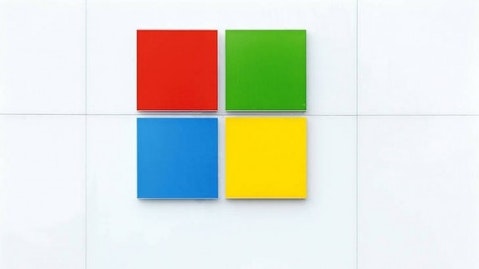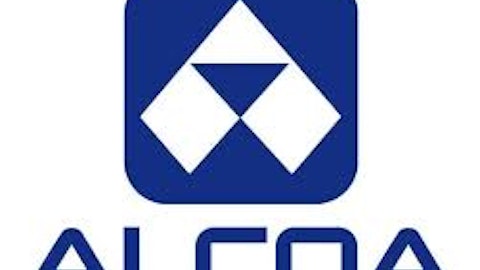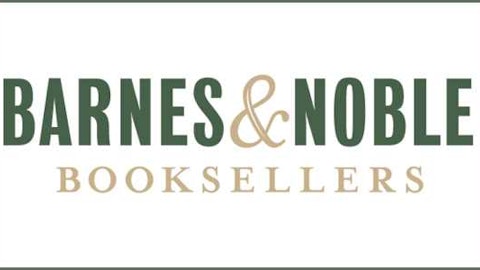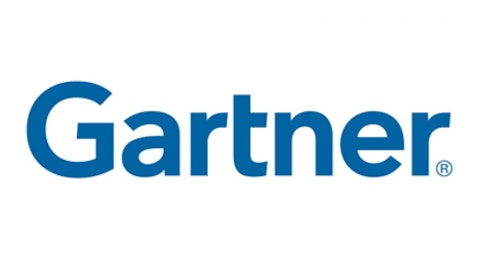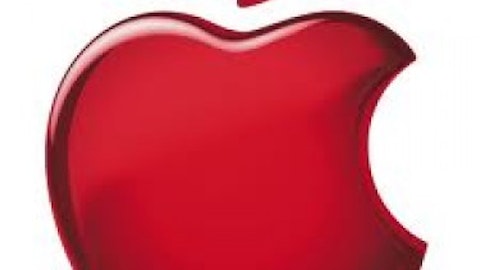Microsoft Corporation (NASDAQ:MSFT) released a preview of Windows 8.1 yesterday, which contained some desirable new features and improvements. Is 8.1 going to “save” Windows 8? No, but Windows 8 really didn’t need to be saved.
Divergent reactions
The reactions to 8.1 have ranged from Adrian Covert’s characterization of it as a “huge improvement” to fellow Motley Fool blogger Sam Mattera’s as “fundamentally broken.” After downloading and installing 8.1, I remain in the middle of the two extremes. I see Windows 8 as an innovative, but unfinished, experiment. Win 8.1 moves the OS a little closer to what I consider its final destination, and that’s a good thing for Windows users.
The best new feature is the new Start Button. The Start Button doesn’t quite work the way many had hoped, since it’s not a reversion to the desktop Start Menu of Windows 7. Instead it serves as a shortcut to the Home Screen.
What’s nice about the Start Button is the fact that it works the same regardless of where you are in the OS. The uniform Start Button provides a sense of convergence that had been missing in the Windows 8 split personality of Modern UI (MS-speak for the tile based interface) and the more traditional Desktop.
This split personality has always been my major qualm about Win 8, both from the standpoint of user interface design and as a business strategy. Microsoft Corporation (NASDAQ:MSFT) set out to design an OS that would work on both tablets and non-touch screen portables and desktops. One has to wonder if this was not a bridge too far, but Windows 8 does anticipate a future of ubiquitous touch screens.
That touch screen future is something I fundamentally accept, despite being a supposedly biased iOS developer, and I admire Microsoft Corporation (NASDAQ:MSFT) for being willing to reach for that future. In the process, Microsoft created an OS in which the Desktop mode and Modern UI (MUI) merely coexist. It was as if there simply wasn’t time and money enough to merge the two modes in a more thoughtful and complete way.
The down turn in PC sales that was identified in the reports of IDC and Gartner for the first quarter (Q1) do indicate some negative impact from the unfinished character of Windows 8. However, on May 7 Microsoft Corporation (NASDAQ:MSFT) announced that Windows 8 had sold 100 million copies, a respectable number that to me indicates that Windows 8 doesn’t need to be “saved.” But the number wasn’t great news either. As Woody Leonhard pointed out in InfoWorld, Win 8 monthly sales have fallen to about 10 million copies/month from first month sales of 37.5 million. In contrast, Win 7 sold about 20 million copies/month for its entire lifetime.
8.1 will likely do little more for sales than maintain the current 10 million copies/month pace. Although it does make transitioning between the MUI and Desktop modes a little less jarring, true convergence is still in the future, probably not until the next full version of Windows. Is it even possible to converge the modes into a single unified OS and user interface that works well in all scenarios? I believe it is and that Microsoft Corporation (NASDAQ:MSFT), Apple Inc. (NASDAQ:AAPL) and Google Inc (NASDAQ:GOOG) are all working towards it.
Backing off from MUI
For Microsoft, it may be a matter of backing off somewhat from the radical departure that is Modern UI. In creating Modern UI, Microsoft Corporation (NASDAQ:MSFT) dumped two fundamental user interface paradigms that have been difficult to satisfactorily replace:
1) Resizable, movable app windows. Yes I know they’re available in Desktop mode, but they’re banished from the MUI. Instead, MUI allows split screens, and with 8.1, even multiple split screens. But it still feels too restrictive, and the screen can only be split into narrow vertical panels.
2) Pop-up menus. Menus actually work very well for mobile operating systems, and both Apple Inc. (NASDAQ:AAPL)’s iOS and Google Inc (NASDAQ:GOOG)’s Android make extensive use of them, yet they are also banished from MUI.
Google keeps it simple
Google has perhaps demonstrated the greatest flexibility regarding integrating touch screen and traditional cursor UI modes. Track pad or mouse driven cursors have been available on Android tablets for some time. Google Inc (NASDAQ:GOOG) makes it look so easy and natural that you have to wonder why the other guys make such a fuss over it. Touch the screen, the device responds in normal tablet mode; touch the track pad, and a cursor instantly appears.
This flexibility also carries over into Chromebook Pixel, which also has a touch screen and a track pad. On screen controls can feel a little small for fingers, but Pixel has all the essential elements of a converged touch screen experience: app windows that can go into full screen mode if the user wants, efficient use of menus, and touch screen functionality combined with a trackpad.
So far I haven’t heard any sales numbers for Pixel, but we may hear more in Google Inc (NASDAQ:GOOG)’s Q2 earnings report. I think people will be surprised by how well Pixel is doing, and in any case, its non-touch screen siblings continue to be top sellers on Amazon.
Apple’s deep integration
Apple Inc. (NASDAQ:AAPL) has probably done the best job of integrating touch-based gesture support of all three of the major PC OS players. Here, I’m talking about Mac OS, not iOS. Apple’s Magic track pad works better than any other track pad I’ve tried, and the gesture support is comprehensive and intuitive.
Apple Inc. (NASDAQ:AAPL) has even integrated into Mac OS full screen app capability, which works alongside normal windows.
In almost every way, Apple has provided in Mac OS the converged UI solution, except one. They won’t take that last step and actually build a touch screen equipped Mac. But they’re thinking about it, as demonstrated by a recent patent application filed by Apple Inc. (NASDAQ:AAPL) designer Duncan Kerr for a laptop with a removable screen.
Merely thinking about it isn’t good enough, and I hope that the touch screen potential of Mac OS is not held back much longer. Unfortunately, I saw nothing encouraging in this regard at WWDC. Apple’s Mac sales have been trending down since the beginning of the year, and I expect this to continue until Apple Inc. (NASDAQ:AAPL) management acknowledge that touch screens are the future of Mac OS. Maybe next year. . .
Despite objections from Apple fans that Macs don’t need touch screens, I consider Apple’s adoption of touch screens for Mac OS to be inevitable. And Windows 8, in its own halting and inelegant way, will have led them into the future.
Mark Hibben has a position in Apple. The Motley Fool recommends Apple and Google. The Motley Fool owns shares of Apple Inc. (NASDAQ:AAPL), Google Inc (NASDAQ:GOOG), and Microsoft Corporation (NASDAQ:MSFT).
The article Microsoft Moves Windows 8 Forward originally appeared on Fool.com.
Mark is a member of The Motley Fool Blog Network — entries represent the personal opinion of the blogger and are not formally edited.
Copyright © 1995 – 2013 The Motley Fool, LLC. All rights reserved. The Motley Fool has a disclosure policy.
